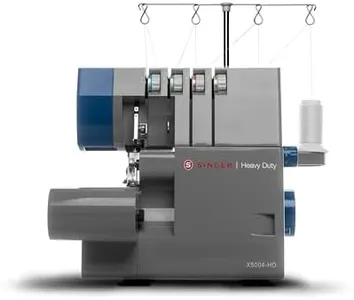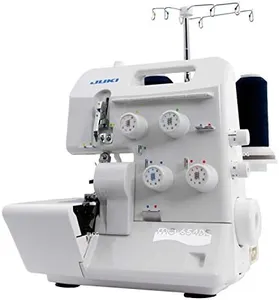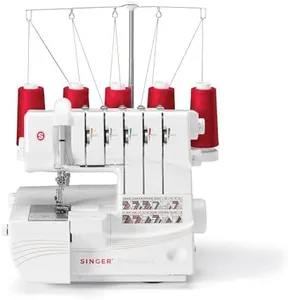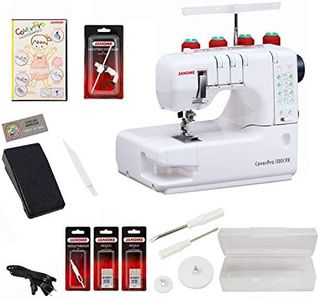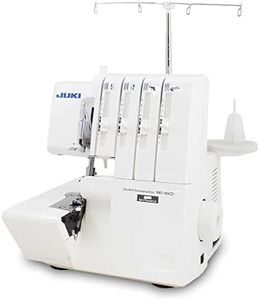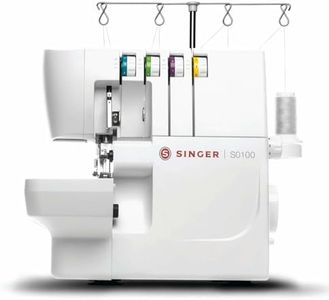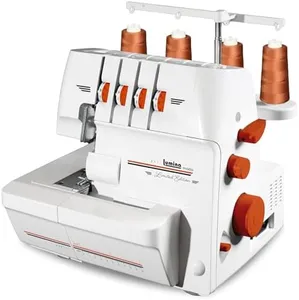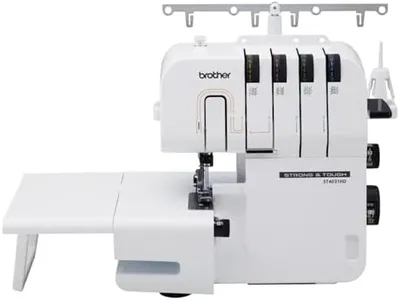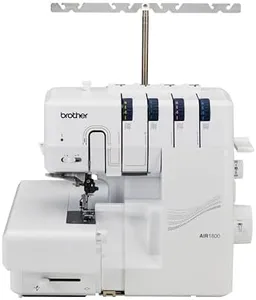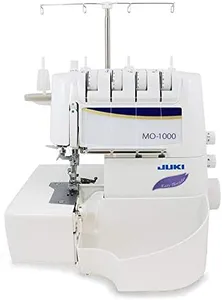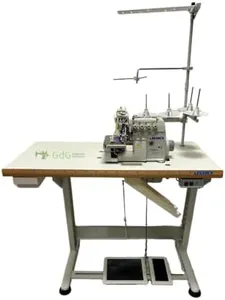10 Best Serger Machines 2025 in the United States
Our technology thoroughly searches through the online shopping world, reviewing hundreds of sites. We then process and analyze this information, updating in real-time to bring you the latest top-rated products. This way, you always get the best and most current options available.

Our Top Picks
Winner
SINGER X5004-HD Metal Frame Serger & Overlock Machine | 2-3-4 Stitch Capability, 8 Built-In Stitches, 1300 Stitches per minute, Adjustable Differential Feed & 2 LED Lights (Grey/Blue)
The SINGER X5004-HD Serger & Overlock Machine stands out in the category of serger machines, especially for users looking for a reliable option for heavy fabrics. With a heavy-duty metal frame, it offers excellent durability, which is essential when working on thicker materials like denim or upholstery. This machine is designed to handle consistent, skip-free stitching, making it a great choice for those who sew frequently or tackle larger projects.
One of the standout features is its versatility. It offers 2, 3, or 4-thread stitching options and includes eight built-in stitches, catering to a variety of sewing tasks, from simple seam finishes to more complex decorative edges. The larger cutting knife is another plus, as it efficiently trims heavy fabrics, enhancing the overall sewing experience.
Performance-wise, the SINGER X5004-HD shines with its ability to sew up to 1,300 stitches per minute, which is ideal for completing tasks quickly. The adjustable differential feed is beneficial as it helps manage different fabric types, preventing puckering and enabling beautiful gathers.
Customer Highlights
A summary of real customer reviews to highlight what shoppers are saying!JUKI MO654DE Portable Thread Serger Sewing Machine
The JUKI MO654DE Portable Thread Serger Sewing Machine is a versatile option for those looking to handle a range of sewing projects. This machine supports 2, 3, and 4 thread serging, which provides flexibility in stitch options and ensures strong, durable seams. One standout feature is the automatic rolled hem, making it easier to achieve professional-looking finishes on delicate fabrics. The color-coded threading system simplifies the often daunting task of threading the machine, which is a big plus for beginners and experienced users alike.
Additionally, the differential feed, which ranges from 0.7 to 2.0, helps manage various fabric types and prevent stretching or puckering. The adjustable stitch length and tension offer more customization, allowing users to fine-tune their work based on specific needs. Another practical feature is the safety switch, which prevents the machine from operating when the swing cover is open, enhancing user safety. With a maximum sewing speed of 1500 stitches per minute, it can handle large projects efficiently.
At 15.18 pounds, it is relatively lightweight for portability without compromising stability. The machine's compact dimensions (10.6 x 13.6 x 11.6 inches) make it suitable for smaller workspaces. The machine might be slightly intimidating for absolute beginners despite its user-friendly threading system due to the complexity of serging itself. It also lacks a free arm, which could limit ease when working on cylindrical pieces like sleeves. Nonetheless, the JUKI MO654DE stands out as a reliable and efficient choice for both hobbyists and more serious sewing enthusiasts.
Customer Highlights
A summary of real customer reviews to highlight what shoppers are saying!Brother Coverstitch Serger, 2340CV, Sturdy Metal Frame, 1,100 Stitches Per Minute, Trim Trap, Included Snap-on Presser Feet
The Brother Coverstitch Serger 2340CV is designed specifically for those who need a reliable machine for creating professional-looking hems and finishes on stretch fabrics. One of its key strengths is the sturdy metal frame, which adds durability and stability, making it suitable for various sewing projects. It offers a maximum sewing speed of 1,100 stitches per minute, allowing users to complete tasks quickly, which is beneficial for both hobbyists and those running small home-based businesses.
In terms of threading, the Brother 2340CV shines with its easy-to-follow, color-coded guides, making it user-friendly, especially for beginners. The differential feed feature is also a plus, providing better control over fabric feeding, which can help avoid puckering or stretching—common issues with stretchy fabrics. The adjustable tension is another useful feature; however, some users reported that mastering it can take time, particularly for those new to serging.
The product’s warranty is commendable at 25 years, which offers peace of mind regarding its longevity. Lastly, note that this machine is intended for use in the US at 120 volts, which could limit its use internationally. The Brother 2340CV is a solid choice for anyone focused on cover stitching, especially with its ease of use and high performance, but it may not fulfill the needs of those who require a versatile sewing machine that handles multiple types of stitching tasks.
Customer Highlights
A summary of real customer reviews to highlight what shoppers are saying!Buying Guide for the Best Serger Machines
Choosing the right serger machine can significantly enhance your sewing projects by providing professional finishes and efficient stitching. A serger, also known as an overlock machine, is designed to sew over the edge of one or two pieces of fabric for hemming, seaming, or edging. To find the best serger for your needs, it's important to understand the key specifications and how they align with your sewing projects. Here are the essential specs to consider when selecting a serger machine.FAQ
Most Popular Categories Right Now
